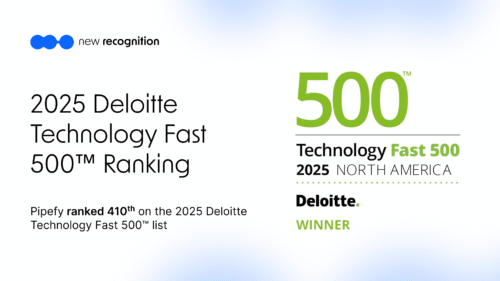ARTICLE SUMMARY
Learn how Lean and Agile can work together to solve various problems and gain efficiency in tech and fintech companies across the world.

Lean can have different approaches when we talk about industries of the manufacturing world and companies of the tech one. Antonio “Panda” Gerent, Agile Coach at PagSeguro, is an expert in these differences as he has experiences with both. We chatted about Lean and Agile applications in contexts where change is the rule, so don’t miss out!
Subscribe to keep up with Gemba Talks Episodes and the best Lean content :
A: Even though today I work at a fintech, my journey with Lean began eleven years ago in the manufacturing sector. I’m a chemical and production engineer, so I worked at the traditional Gemba for a long time, which granted me a different attitude when I joined the tech world.
This shift from the manufacturing world to the data one brought many changes in the way I see and apply Lean. I was seeing things in front of me before (stock, waste, movement and so on), but when we talk about information we deal with data that is spread across different places. Information is volatile and fast. To apply Lean in such context you need to adapt ideas.
One of the great benefits of technology is the easy and quick possibility of experimentation, which in the manufacturing industry is more complicated due to culture and resistance of change. The concepts of experimentation, testing and hypothesis validation are much more interesting in the data world because we work with shorter cycles than in the industry.
A: At PagSeguro we talk about continuous improvement as something constant in everyone’s routine. We spread this mindset not in an institutional way, but in an organic one. We have a professional inside each squad responsible for its processes success and also for propagating continuous improvement concepts (like experimentations) for the whole team.
We treat agility as a great journey since we understand that it’s something transformative and endless, shaped to everyone’s reality. That’s why other types of frameworks that were used in companies such as Spotify may not work here and so on. We have to understand that what makes sense to one company may not make sense in other contexts. That’s why adaptation is key.
At PagSeguro we have two roles regarding Agile and continuous improvement: the Agile Master and the Agile Coach. The master one is responsible for the Agile actions within the team. The coaches spread across different areas, integrating them from technology to back-office areas. That’s why it’s important to have a clear view of the processes of the company, with everyone aware of their value and position in the value stream.
A: Bottleneck is a great term when we talk about areas that have a structured process, mainly because we can rapidly improve its efficiency to reach simpler and clearer workflows. However, we cannot forget the connections with other areas. We have to deploy continuous improvement as a whole, in all areas, so that we can accelerate the entire value stream.
That’s why we have Agile Coaches in all areas (such as accounting, legal, HR etc.) and not only in the product/development squads. Back-office operations areas must have full visibility so we can establish a constant and steady rhythm of improvement within the company. Also, this grants an accurate value stream that allows for faster growth and better results.
A: The concept of Agile Transformation is not something that makes total sense for me since it’s not a script you begin to follow and expect to happen naturally. When we talk about agility, we invariably talk about a set of tools and frameworks, but if you apply those resources in the wrong way, without the proper context and culture, you won’t achieve the ideal result.
On the other side, if you already have the right culture that understands the basic concepts of Agile but don’t use the best tools, it’s possible to achieve great results. Picture this: it’s like we slip mindset from behavior. The two can sound the same (or at least similar), but they’re not. Behavior is what is actually happening, a piece of a cycle in which it’s essential to try new things to assimilate them and encourage acculturation.
It’s vital to have this culture view when we talk about Agile, whereas the practices and tools can feed this view of culture. In this line of thought, it is quite similar to what we see with the Lean Journey. There’s also a constant Agile Journey, it’s not because I apply some tools I can be considered Agile. It’s an ongoing process.
A: Lean is strongly related to processes, but my view of that changed when I began to look beyond the processes: to the people involved in them. When I realized their value, they’re the ones that make all happen (whereas at the Gemba or in other areas of the company). Value is in these people’s hands and we need to recognize that.
One of the biggest lessons I’ve learned is one of the famous quotes of Taiichi Ohno: be harsh with the processes but kind with the people. I truly believe that people are the path to the revolution that we need to make.
Bonus: Question by Gilberto Strafacci, Director of Operations at Setec Consulting Group.
A: Stability is the foundation of the House of Lean. However, when we talk about the tech world we won’t work necessarily with stable scenarios. Changes may be a constant in this market but we have to work toward sustainable growth looking to all variabilities. We can’t eliminate the variabilities, but we can adapt to them.
The sense of progression is closely linked to being able to adapt to a new variability and reality. Adaptation has to be fast. You will not necessarily be able to stabilize your operations, but you must know how to act exceptionally well with variabilities.
Related articles

10 Technology Trends That Will Impact Companies in 2026

[One Pager] Pipefy’s Intelligent Workflows: how the platform builds the ideal infrastructure to connect AI, systems, and people with security and scale

AI Governance: How Pipefy Mitigates Risks and Ensures Safe Use of Artificial Intelligence

Pipefy named to 2025 Deloitte Technology Fast 500™ Ranking

Why Workflow Automation Is the New Database: The Infrastructure Behind Intelligent Orchestration and AI-Driven Operations





